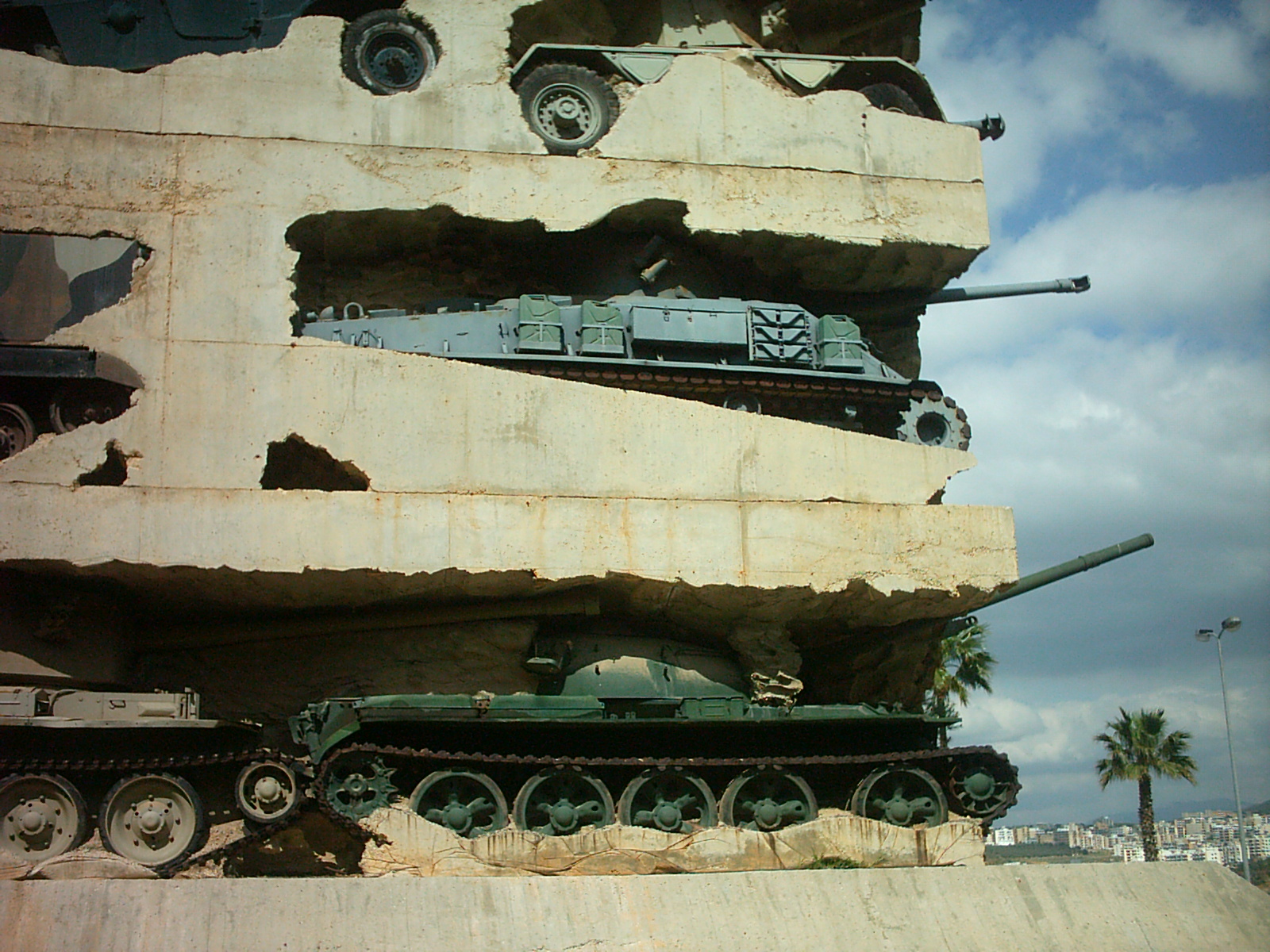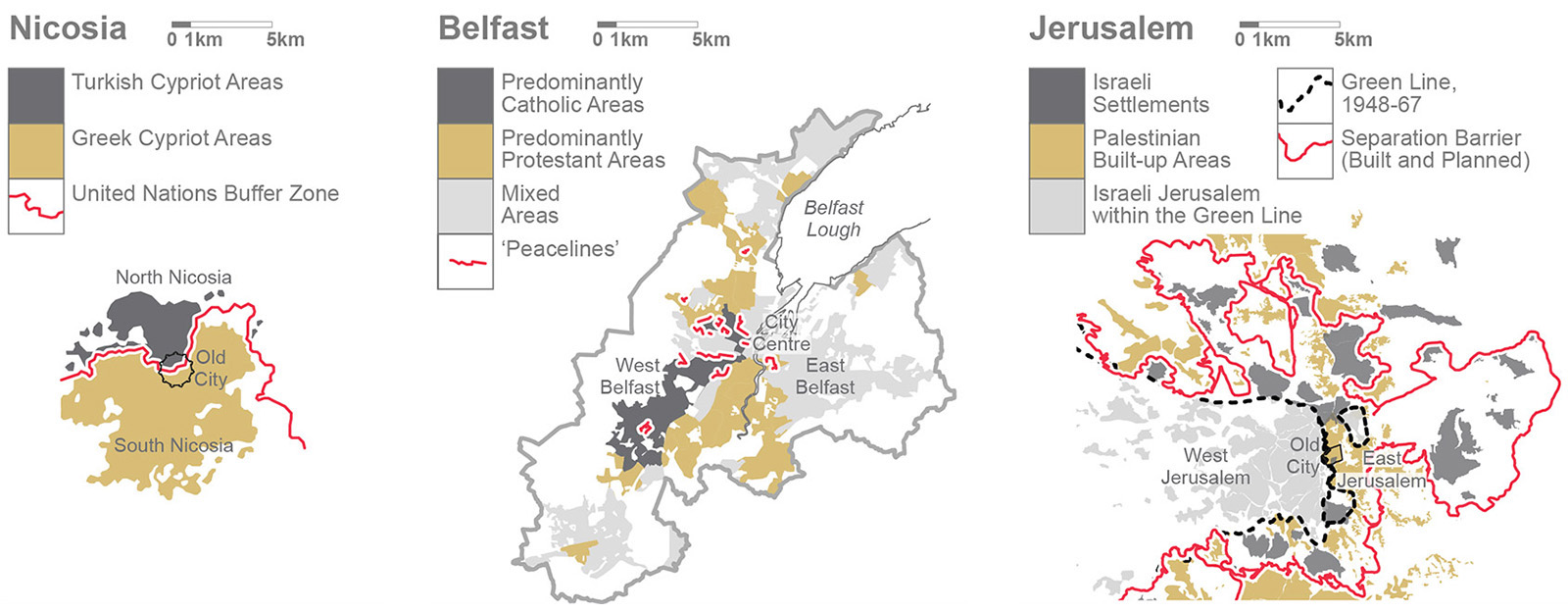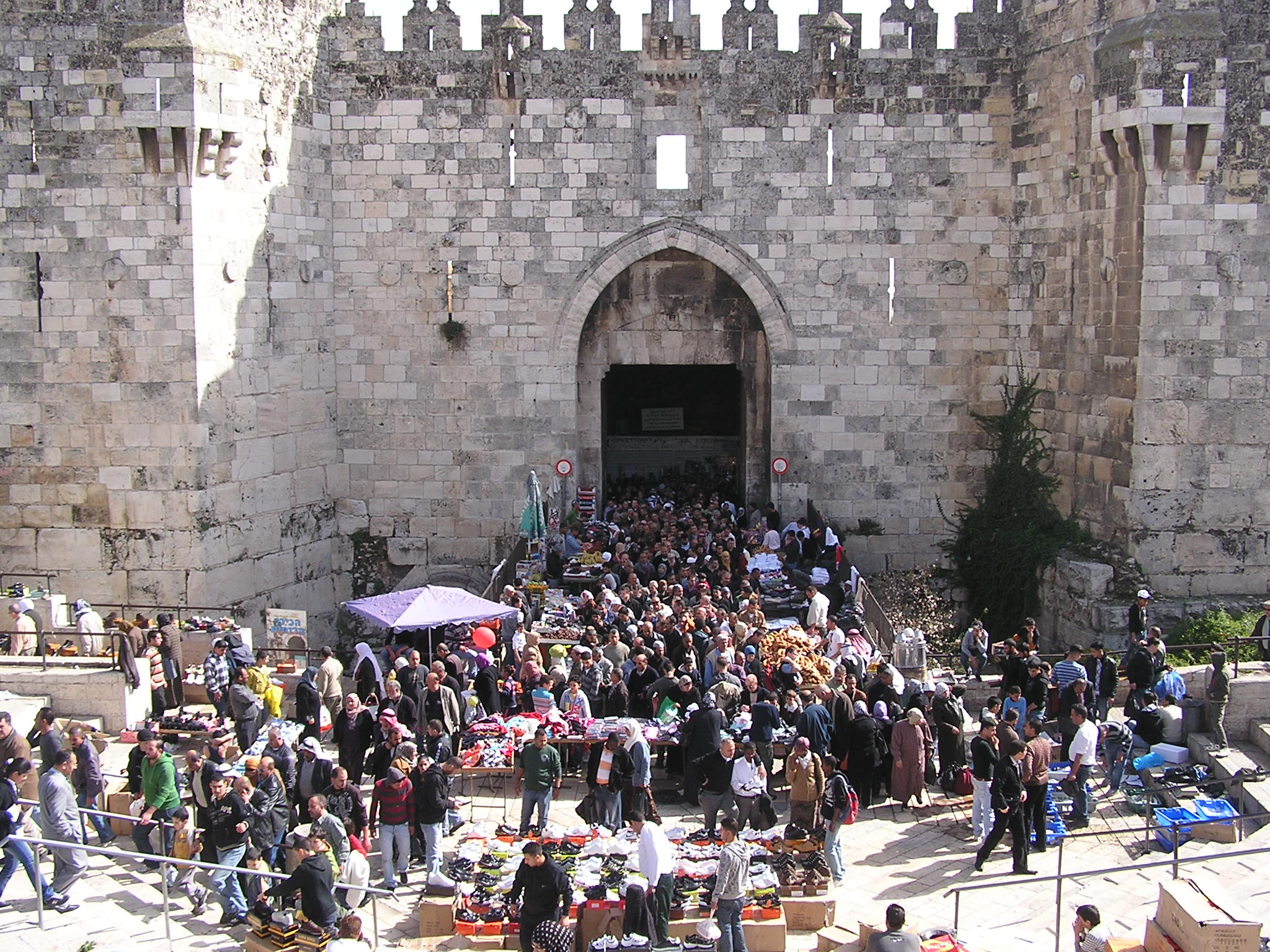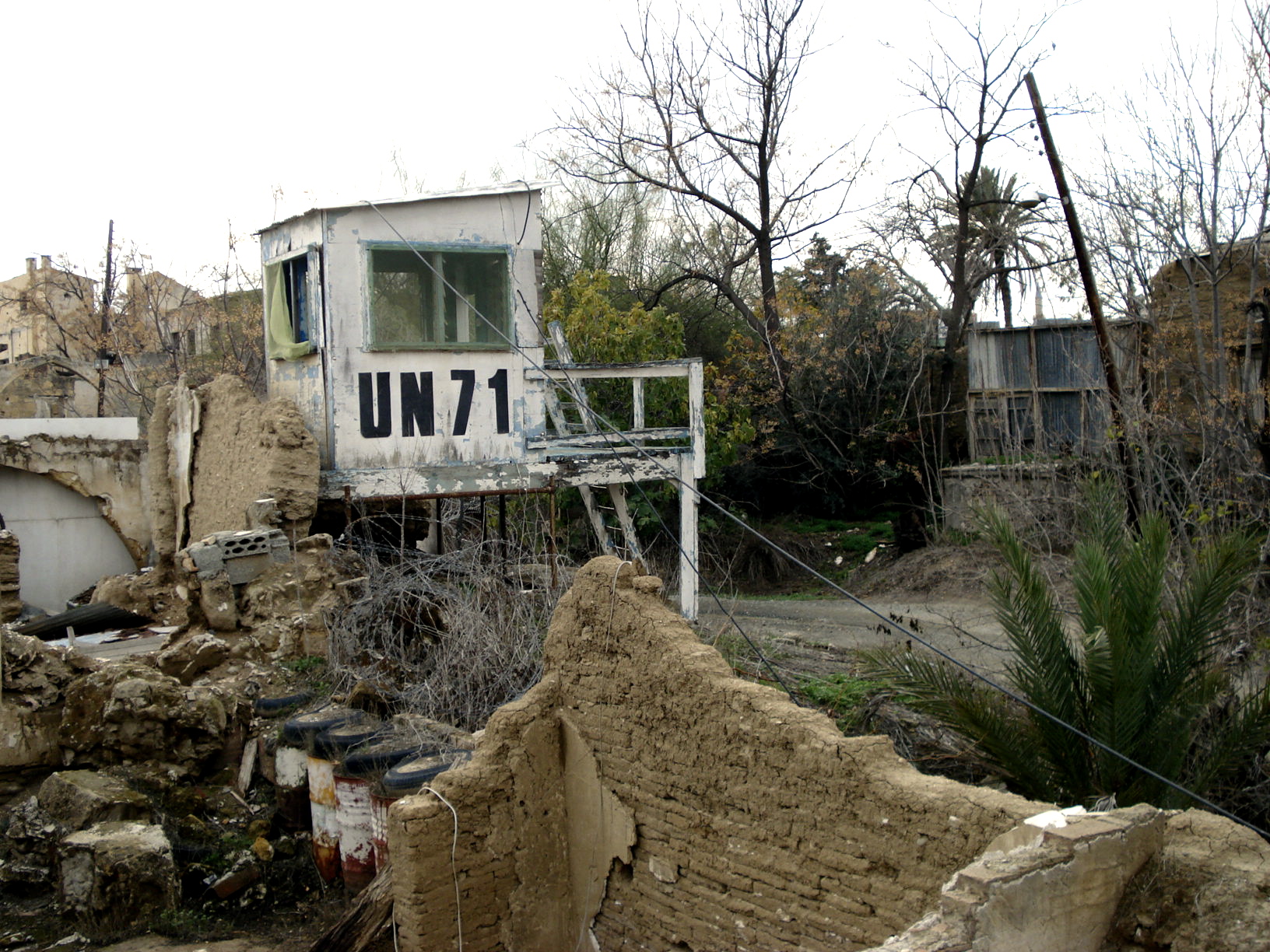
[Beirut Tanks photo by Craig Larkin]
In spring 2016, BUILD visited Cambridge University where we spoke with Wendy Pullan, director of the Centre for Urban Conflicts Research in the Department of Architecture. Most conflicts today take place in cities, and the Centre aims to provide a better understanding of urban conflict (particularly extreme or specific cases) through interdisciplinary investigation and examination. The discussion focused on the nature of urban conflict, the importance of mapping urban areas to understand social dynamics, and how architecture and infrastructure affect cities in conflict.
Because of the conflicts that continue to occur around the world, the Centre’s work is more important than ever. As we pulled this interview from the archives, we thought it important to check in with Wendy to learn if she has anything to add in light of current events.
“I have re-read the interview and I think what I said remains valid. The attitudes in certain parts of the world may have changed – people are more divided and angry and very concerned about their own identities – but the situations in conflicted cities continue to be fraught, as they have been for many years. We should not make the mistake of assuming that people who are experiencing high levels of conflict, oppression or violence see their situation in the same way as do people who view it from afar.
There is no question that cities have bore the brunt of wars since 2016; urban people, activities and fabric have suffered badly in a number of cities. My basic contention stands: the arena for conflict and war is in cities, and if people are to live together in any reasonable way, it will depend upon urban life. Cities are mostly where we live, and the place where most people come together in conflict and in more peaceful pursuits; one tends to play off against the other. This has not changed since we met in 2016.”
How did the Centre for Urban Conflicts Research get its start?
It began in 2003 with a small pilot study in Jerusalem, which was based on a loose hypothesis that conflict was increasingly located in cities. The study turned into a large program, Conflict in Cities and the Contested State (CinC), of which I was the director. The 10-year study was supported by the Economic and Social Research Council (ESRC) of the UK. The funding allowed us to work with two other universities to bring in people from politics, geography, sociology, anthropology, and law. Interestingly, it was the first major project funded by the ESRC for architecture and led by architects. The project brought cities into the realm of social sciences, and we first looked intensively at Belfast and Jerusalem, the classic divided cities in Europe and the Middle East. Later, we brought in other cities, from historic Berlin to Nicosia, Beirut, Bagdad, and several in Palestine and the Balkans. The funding came to an end in 2013, and the program was transformed into the Centre for Urban Conflict.
You received your Bachelor of Arts from the University of Toronto, your Bachelor of Architecture from the University of British Columbia, and your PhD from Cambridge University, all schools in relatively peaceful cities. What led you to study urban conflict?
While in architecture school at UBC, I participated in a program that sent groups of students and teachers abroad for an entire term; the city I studied just happened to be Jerusalem. We lived in a Palestinian hotel in East Jerusalem, and we were affiliated with an Israeli architecture school in West Jerusalem. Every day we’d walk across no man’s land (and this was the mid-’70s, so it was still really no man’s land). We were very aware of experiencing these two cultures physically, and I think that was extremely formative; the professor who took us there wanted us to experience both sides as equally as possible. I ended up living there for 13 years, during which time I taught architecture. In various ways, I’ve been very involved with Jerusalem for a long time. If you’re going to examine the conflict of cities, Jerusalem is an obvious place to study.

[Graphics courtesy of CinC]
How has mapping and diagramming been important to studying the conflict in cities?
The original CinC project was setup with the idea that visual research was very important. Through studying these divided cities, we found that they’d never been properly mapped at relatable scales or drawn by the same hand. Once mapped properly, it was enlightening to compare the various cities and see how different they were.
Nicosia is the classic divided city with just two halves. Belfast, on the other hand, contains many small-scale separation walls within neighborhoods. And Jerusalem has a long irregular wall. The walls in these three cities alone are completely different from each other. In another study we looked at Vukovar, a town in the former Yugoslavia, and we mapped the city’s coffee houses because they were significant to the locations of the Croat and Serb populations.

Through studies like these, we were able to develop the idea that drawings are, of course, wonderful for communicating information, but also very useful analytically. Architects use drawings to test designs, and although we weren’t designing anything, we still needed to analyze our sites. They were a valuable counterpoint to the work of the social scientists, who were primarily interested in verbal interviews.

Have you found that urban conflict mutates and evolves, or do your case studies still apply accurately to current conditions?
Conflicts have changed. They aren’t like traditional wars, such as World War II, in which war is declared, fought, and ended with a post-conflict period. Now, conflicts tend to be smaller and more numerous. Often they come from within cities, involving civilians rather than the military or foreign powers. So the question of sovereignty has changed a tremendous amount.
We noticed that areas experiencing conflict also suffer it over long periods of time. When there are high levels of conflict and violence, people tend to shrink back into their communities. When things are more peaceful, they move into public places; it is in these spaces that they might encounter each other, and the “other,” which is very important. While tensions tend to remain high, life goes back to a reasonable level of normality. We’ve seen these patterns, and it’s almost an ebb and flow.

[Damascus Gate photo courtesy of CinC]
You’ve written that “cities have been built on the fault lines of culture.” Can you elaborate?
This is actually a quote from Scott Bollens. A city is a place where different people come together—for transportation, trade, or religious reasons. The nature of a city is that it brings different people together. By definition, cities are diverse—without this, they are not cities, but perhaps villages or tribes or some other structure. Because of this diversity, it means every city will have conflict. The question is how much conflict do they have and to what extent can we channel conflicts in constructive ways? That’s where it gets complicated because we don’t understand why some people of different ethnic groups, who have lived together for generations, will suddenly start fighting with each other.
Institutions of governance, like parliament and judicial systems, are adversarial. People don’t often agree with each other, but these institutions provide constructive ways of dealing with conflict so that those involved can reach a point at which they can move on. It’s a dialectical process. We need to rely on this approach much more than we do. We need to find new and creative ways of dealing with conflicts, rather than trying to achieve the impossible task of removing or solving them.

[Nicosia photo courtesy of CinC]
Are there examples of architecture playing a role in mitigating urban conflict?
There aren’t many. At the same time, architecture is important because it forms the setting for conflict. We’ve found that it’s really difficult to design for conflict, partly because the architect’s job is mostly about resolving things. Conflict often has no resolution, which is difficult to design for. We’ve found that many places that are more successful in bringing people together are often simple and under designed.
Nonetheless, there are some interesting architectural attempts. I recently reviewed a new park in Copenhagen called Superkilen. It’s located in a diverse neighborhood with a large population of Muslim immigrants. The area has a history of unrest, and there have been some riots. It’s a big park, and much of it is taken up by routes for cycling and skateboarding. They’ve invited all of the ethnic and national groups to place something that represents their nation in the park to give them a stake in it. Everyone is excited about it, but whether this will work or not, I don’t know.
You’ve used the phrase “excessive levels of conflict” in your talks. What is the threshold between “conflict” and “excessive levels of conflict”?
Tipping points vary and change, and it’s hard to simply say that there’s a certain point of no return. The conflict in Belfast looked terrible until we saw Sarajevo, which looked terrible until we saw Beirut, which looked terrible until we saw Kigali. I’ve come to the conclusion that conflict and violence are really quite different, though they do overlap. Conflict can be productive while violence rarely is. You can have a lot of conflict without violence. To a good extent, the tipping point is when conflict becomes violent, and we really need to pay attention to when the violence becomes uncontainable and self-perpetuating.
How do walls and buffer zones affect a city?
Infrastructures put into place over long periods of conflict or occupation change a city. Such imposed barriers hold in them the residue of violence. When you put a wall or a buffer zone into the middle of a city, like in Nicosia for example, it divides the city and completely changes it. These walls or buffer zones are usually seen as temporary, but they often become permanent, and it is difficult to know how to get rid of them once they are fixtures in cities. Oftentimes these buffer zones become convenient locations for highways and other infrastructure that further divides the city.

[Photo courtesy of CinC]
Given all of your studies and experiences with urban conflict, what are you investigating now?
With such a good body of case studies on this material, I’m writing a book on the nature of urban conflict. I’m sad to say that the research has been vindicated, and there are many cities now experiencing high levels of conflict. So there is more work to do.
 Wendy Pullan is Professor of Architecture and Urban Studies at the University of Cambridge where she was Head of the Department of Architecture 2014-17. She is currently Director of the Centre for Urban Conflicts Research at Cambridge. Professor Pullan has published widely on European and Middle Eastern architecture and cities, examining the processes of urban heritage, conflict, and change, both historical and contemporary. Her recent publications include: Locating Urban Conflicts (2013), The Struggle for Jerusalem’s Holy Places (2013) and Architecture and Pilgrimage 1000-1500: Southern Europe and Beyond (2013). She is a Fellow of Clare College, Cambridge.
Wendy Pullan is Professor of Architecture and Urban Studies at the University of Cambridge where she was Head of the Department of Architecture 2014-17. She is currently Director of the Centre for Urban Conflicts Research at Cambridge. Professor Pullan has published widely on European and Middle Eastern architecture and cities, examining the processes of urban heritage, conflict, and change, both historical and contemporary. Her recent publications include: Locating Urban Conflicts (2013), The Struggle for Jerusalem’s Holy Places (2013) and Architecture and Pilgrimage 1000-1500: Southern Europe and Beyond (2013). She is a Fellow of Clare College, Cambridge.
Lefkos Kyriacou was Research Associate for ‘Conflict in Cities’ at the Department of Architecture, University of Cambridge and is currently a member of the Centre for Urban Conflicts Research and supervisor for the MPhil Degree in Architecture and Urban Design. He has been a practicing architect since 2005 and director of ‘Figure 1 Architects‘ in London.





